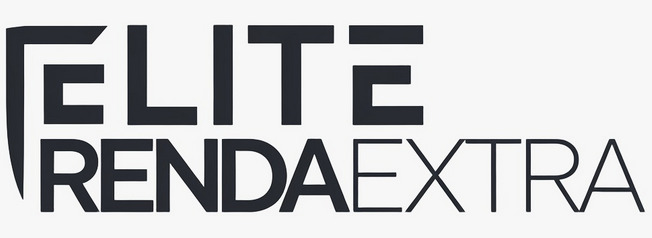Navigating the world of personal loans can feel like a complex puzzle, especially when it comes to understanding the numbers that will define your borrowing experience. The interest rate you secure and the repayment term you agree to are pivotal pieces of this puzzle, directly impacting both your monthly budget and the total cost of your loan over time.
This guide aims to demystify these core components, empowering you to make informed financial decisions. By breaking down how rates are determined and what repayment terms entail, you’ll be better equipped to choose a loan that aligns with your financial goals and circumstances.
Demystifying Personal Loan Interest Rates
When you take out a personal loan, the interest rate is essentially the cost of borrowing money. It’s expressed as a percentage of the loan amount and is a crucial factor in determining your overall loan expense. Lenders don’t just pick these rates out of thin air; they are calculated based on various factors, including the lender’s own borrowing costs and the risk associated with lending to you.
The All-Important APR (Annual Percentage Rate)
While the interest rate is a key component, the Annual Percentage Rate (APR) provides a more comprehensive picture of the loan’s cost. The APR includes not only the interest rate but also most other fees associated with the loan, such as origination fees or closing costs. This makes APR a better metric for comparing loan offers from different lenders, as it reflects the true annual cost of borrowing.
For example, a loan might have a lower advertised interest rate but higher fees, resulting in a higher APR than a loan with a slightly higher interest rate but no fees. Always compare APRs to get an apples-to-apples comparison.
Fixed vs. Variable Rates – What’s the Difference?
Personal loans typically come with either fixed or variable interest rates. Understanding the distinction is vital for long-term financial planning.
- Fixed Rates: A fixed interest rate remains the same throughout the entire loan term. This means your monthly payments will also stay consistent, making budgeting easier and more predictable. You’ll know exactly how much you need to pay each month and the total interest you’ll accrue over the life of the loan.
- Variable Rates: A variable interest rate can fluctuate over the loan term. It’s usually tied to a benchmark index rate (like the Prime Rate). If the benchmark rate goes up, your interest rate and monthly payments could increase. Conversely, if it goes down, your payments might decrease. Variable rates can sometimes start lower than fixed rates, but they carry the risk of future payment increases.
Here’s a quick comparison:
| Feature | Fixed Rate | Variable Rate |
|---|---|---|
| Predictability | High (payments stay the same) | Low (payments can change) |
| Risk of Increased Payments | None | Possible, if benchmark rates rise |
| Initial Rate | Often slightly higher | Can be initially lower |
| Best For | Borrowers who prefer budget stability | Borrowers comfortable with potential payment fluctuations |
Key Factors That Determine Your Personal Loan Rate
Lenders assess several factors to determine the interest rate they’ll offer you. A lower perceived risk generally translates to a lower interest rate.
Your Credit Score: The Primary Driver
Your credit score is one of the most significant factors. A higher credit score demonstrates a history of responsible borrowing and repayment, making you a less risky borrower. Lenders typically offer their best rates to individuals with excellent credit. If your score is lower, you may still qualify for a loan, but likely at a higher interest rate to compensate the lender for the increased risk.
Loan Amount and Your Income
The amount you wish to borrow and your verified income also play a role. Lenders want to ensure you have sufficient income to comfortably manage the loan payments alongside your other financial obligations. A larger loan amount might sometimes come with a slightly different rate structure compared to a smaller one, depending on the lender’s policies.
Debt-to-Income (DTI) Ratio
Your DTI ratio compares your total monthly debt payments (including the potential new loan) to your gross monthly income. A lower DTI ratio indicates you have more disposable income to handle new debt, making you a more attractive borrower. Lenders typically have maximum DTI thresholds, and a lower DTI can help you qualify for better rates. You can often find information on how to calculate your debt-to-income ratio from consumer financial protection resources.
Current Economic Climate
Broader economic conditions, such as prevailing interest rates set by central banks and overall market stability, can influence the rates lenders offer. When the economy is strong and benchmark rates are low, personal loan rates tend to be more competitive.
Navigating Personal Loan Repayment Terms
The repayment term is the length of time you have to pay back the loan. Personal loan terms commonly range from 1 to 7 years (12 to 84 months), though some lenders may offer shorter or longer options.
Loan Term Length: Short vs. Long
The loan term you choose significantly impacts both your monthly payment amount and the total interest paid over the life of the loan.
- Shorter Loan Term:
- Pros: You’ll pay off the loan faster, and the total interest paid will be lower.
- Cons: Monthly payments will be higher.
- Longer Loan Term:
- Pros: Monthly payments will be lower and more manageable.
- Cons: You’ll pay more in total interest over the life of the loan, and you’ll be in debt for longer.
Consider your monthly budget and your overall financial goals when deciding on a term. While lower monthly payments from a longer term might seem appealing, be mindful of the higher total interest cost.
Monthly Payment Calculations
Your monthly payment is calculated based on the loan principal (the amount borrowed), the interest rate, and the loan term. This process is known as amortization. Each payment consists of a portion that goes towards interest and a portion that reduces the principal. Early in the loan, a larger part of your payment goes to interest; as time goes on, more goes towards the principal.
Potential Fees to Watch Out For
Beyond interest, be aware of other potential fees:
- Origination Fees: Some lenders charge an upfront fee for processing the loan, typically a percentage of the loan amount (e.g., 1% to 8%). This fee is often deducted from the loan proceeds, so you’ll receive slightly less than the amount you borrowed.
- Late Payment Fees: If you miss a payment or pay after the due date, you’ll likely incur a late fee.
- Prepayment Penalties: Some loans (though less common for personal loans) may have a prepayment penalty if you pay off the loan before the end of the term. Always check if this applies.
- Non-Sufficient Funds (NSF) Fees: If a payment bounces due to insufficient funds in your account, you could be charged an NSF fee by the lender and potentially by your bank.
How Rates and Terms Work Together
Interest rates and repayment terms are intrinsically linked and together dictate the affordability and overall cost of your personal loan.
The Balancing Act: Lower Payments vs. Total Cost
There’s a constant trade-off. A longer repayment term will give you lower monthly payments, which can be easier on your immediate budget. However, because you’re paying interest over a more extended period, the total amount of interest you pay will be significantly higher. Conversely, a shorter term means higher monthly payments, but you’ll pay far less interest overall and be debt-free sooner. Using a personal loan calculator can help you visualize these differences and see how changing the term or rate affects your payments and total costs.
Strategies for Finding the Best Personal Loan
Securing favorable rates and terms requires a proactive approach.
Compare Offers from Multiple Lenders
Don’t accept the first loan offer you receive. Shop around and compare offers from various lenders, including banks, credit unions, and online lenders. Pay close attention to the APR, term options, and any associated fees. Many online lenders allow you to pre-qualify for a loan with a soft credit check, which won’t impact your credit score, giving you an idea of the rates you might receive.
Read the Fine Print Carefully
Before signing any loan agreement, meticulously read all the terms and conditions. Understand the interest rate (fixed or variable), the exact APR, all fees, the repayment schedule, and any penalties for late payments or prepayment. If something is unclear, ask the lender for clarification.
Consider a Co-signer (If Applicable)
If you have a limited credit history or a lower credit score, applying with a co-signer who has good credit might help you qualify for a loan or secure a better interest rate. However, remember that a co-signer is equally responsible for repaying the debt if you fail to do so.
Managing Your Personal Loan Responsibly
Once you’ve secured a personal loan, managing it responsibly is crucial for your financial health.
Making On-Time Payments
Consistently making your monthly payments on time is paramount. This helps you avoid late fees and, more importantly, positively impacts your credit score. Consider setting up automatic payments to ensure you never miss a due date.
What if You Can’t Make a Payment?
If you anticipate difficulty making a payment, contact your lender immediately. Don’t wait until you’ve already missed it. Some lenders may offer options like forbearance or a modified payment plan to help you through temporary financial hardship. Open communication is key.
Ultimately, a thorough understanding of personal loan rates and repayment terms is your best defense against unfavorable borrowing conditions. By carefully evaluating how interest rates are applied, the impact of different loan terms, and the fine print of any loan agreement, you can navigate the borrowing process with confidence. For further guidance on responsible borrowing, resources from reputable financial institutions can be invaluable. For instance, the Consumer Financial Protection Bureau offers extensive information on understanding personal loan rates and repayment terms, which can provide additional context and support your decision-making process.



